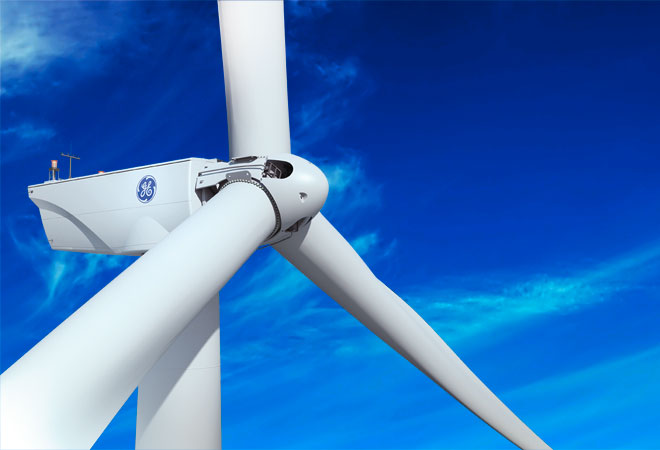GE’s new 1.7-100 wind turbine, the second of it’s “Brilliant” series made it’s debut in Chicago at the WINDPOWER 2013 expo held at McCormick Place from May 5th through 8th. GE’s Brilliant series wind turbines have received much fanfare and attention and promise to be a significant step forward in improving the efficiency and viability of wind power and is expected to be a big win for GE in the coming years.
The larger 2.5-120 (2.5 mega watt 120 meter rotor) was the first of the Brilliant series to be unveiled and has already been deployed in the Netherlands over the past few months as part of a trial run. The first order of these will be installed this summer at the Mills Texas wind farm owned by Invenergy.
The new 2.5-120 turbines are said to be 25 percent more efficient than the previous 2.5 mega watt model and will result in 15% more power generation per unit. They also integrate what GE refers to as the industrial internet to enhance the efficiency of each turbine by self monitoring in real time and making adjustments to optimize the amount of energy being generated. While a small part of the improvement can be credited to the larger tower (140 feet) the majority can be attributed to the active real time control system which is able to respond immediately to any changes in wind speed and direction by analyzing thousands of data points per second. Being connected to the internet would allow for each turbine to consistently assimilate weather forecasts and stay informed of the supply and demand status of the grid. In addition, each of the new turbines would be able to communicate with other turbines and this will result in a steadier more predictable supply of power.
Also of note is the integration of a battery in the turbine which although relatively small, would allow for an increase in the amount of energy absorbed by the grid. In effect these batteries included in the turbines would be able to make up any shortfalls in the energy output predicted by the algorithms thus assuring that supply will always reflect what was anticipated.
The incorporation of both the advanced algorithms and battery storage technology into the new turbines will enhance short term predictability by being able to accurately assess outputs 15 to 60 minutes ahead.
The smaller of the turbines, the 1.7 – 100 will be used in a Michigan based wind farm by Next Era Energy who have purchased 59 of these turbines for their Tuscola II project in East central Michigan.
In the course of 2013, GE has sold over 1 gigawatt of wind turbines which would be enough to power over 330,000 homes.
Wind power as of early 2013 accounts for about 4% of electric power generation in the U.S and appears to be in an uptrend with 13 gigawatts installed nationally in 2012. As recently as 2006 wind accounted for less than 1% of electrical generation, but looks set to cross the 10% threshold by early in the next decade. Both the NREL and AWEA have articulated that wind power could provide as much as 20% of electric generation in the U.S. by 2030. It has also been stated that with the implementation of smart grid technology and improved battery storage technologies that over 30% electrical generation from wind it possible.
Aticle Written by: David Mazovick
[nggallery id=24]


